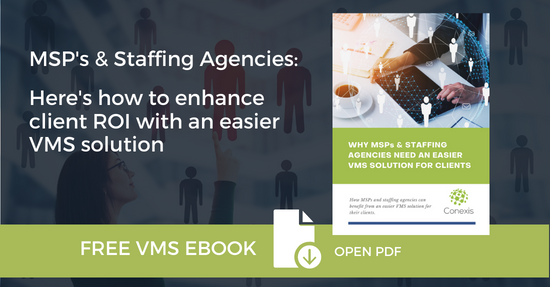Are you still managing your non-employee workforce using manual spreadsheets, in-house databases or Sharepoint-like websites?
Well, if you have read our blog, 5 Dangers of Using Manual Spreadsheets to Manage Staffing Vendors, then you’ll be aware of how using manual spreadsheets to manage your contingent workforce can lead to internal inefficiencies, a lack of centralization, human error, fragmented processes across your organization and no real vendor performance insights.
All of this leads to hidden costs, rogue spend and a complete lack of visibility into your non-employee workforce and how your staffing agencies are performing.
The fact you’re aware of these problems means you have an opportunity. An opportunity to address them with effective management solutions that give your business clear visibility and control over your vendors, leading to improved workforce quality, reduced costs and, ultimately, increased profits.
If you have started looking for a solution, it’s likely you have stumbled across these solutions, MSP and VMS, or a vendor management system (VMS) software solution and managed services provider (MSP) model.
In this blog, we take a look at what each of these mean, how they apply to your contingent workforce management program, as well as some information on what could be the best option for your company.
Let’s start by taking a look at what a VMS is.
What is a VMS?
A vendor management system, sometimes known as vendor management software, is a web or cloud-based system designed to act as a mechanism for companies to manage, automate and centralize the management of their non-employee workforce all on one platform.
A VMS will automate all of the processes associated with managing your contingent workforce and the vendors associated with it, including critical processes such as sourcing, onboarding, time entry, approval, payments and much more. This saves your organization countless hours and significantly improves internal efficiencies.
On top of automating these processes, the consolidation of a non-employee workforce program gives strategic insight into how the program is performing. This gives companies clear visibility into how vendors are performing, where rogue spend may be occurring in their non-employee workforce program, and whether staffing agencies are meeting predetermined targets.
What is an MSP?
A managed services provider is an organization that takes over the management of your entire non-employee workforce. It is a way of outsourcing the entire responsibility of managing non-employee workers and staffing agencies to a third-party provider, as opposed to being managed by your company’s HR or procurement department.
An MSP will take over all of the responsibilities of managing your contingent workforce and staffing agencies, from sourcing workers, managing vendor relationships, analyzing vendor performance, payments and much more.
MSPs can either be vendor neutral or not. Some managed services providers will hire non-employee workers from their own established and approved database of staffing agencies, while others will have no links to specific staffing agencies.
Which is the best option for the management of your organization’s non-employee workforce?
It’s important to note that an MSP and a VMS aren’t inherently different solutions, they are just simply a different way for your organization to approach the management of your temporary staffing program. The internal use of a VMS streamlines contingent workforce management, while an MSP outsources the process freeing up your internal resources.
A managed services provider will use a vendor management system to manage your non-employee workforce on your company’s behalf.
So, which option is best for your organization? A VMS is often selected by organizations with smaller non-employee workforce spend.
As an organization with smaller temporary staffing spend, anywhere from say $1m to $10m, can realize huge benefits from the implementation of a vendor management system without going the outsourced route.
Managing your staffing agencies with a VMS will lead to benefits such as improved workforce visibility, smarter vendor performance tracking, reduced costs, vendor consolidation and improved internal efficiencies - all without the additional expenses of partnering with an MSP.
However, for many organizations an MSP brings extensive VMS experience, and could offer additional talent pools necessary for agile growth, along with strategic consulting.
Want to learn more about the benefits of a vendor management system? Get in touch with us today. Conexis VMS is the first vendor management system built specifically for spend with no minimums, the perfect solution for organizations with smaller non-employee workforce spend.




